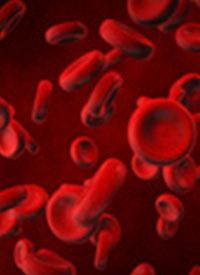Article
Topical Ruxolitinib Shown to be Effective and Tolerable in Cutaneous cGVHD
Author(s):
Topical ruxolitinib has shown improved reduction of body surface area of cutaneous chronic graft-vs-host disease vs standard moisturizer vehicle cream, according to interim study results from a poster presented at the 2022 Transplantation & Cellular Therapy Meetings.

Topical ruxolitinib (Opzelura) has shown improved reduction of body surface area of cutaneous chronic graft-vs-host disease (cGVHD) vs standard moisturizer vehicle cream, according to interim study results from a poster presented at the 2022 Transplantation & Cellular Therapy Meetings.1
Based on an interim analysis of a randomized phase 2 trial (NCT03954236), topical ruxolitinib 1.5% cream led to reduced body surface area (BSA) of cGVHD from 13.4% to 7.7% over 28 days versus a reduction from 13.4% to 11.0% with vehicle cream (standard moisturizer) (P = .15).
The oral form of ruxolitinib (Jakafi), a Janus kinase inhibitor, has been approved by the FDA to treat cGVHD after failure of 1 or 2 lines of systemic therapy based on positive outcomes in the randomized, open-label phase 3 REACH3 study (NCT03112603).2 There are currently no topical therapies approved for cGVHD of the skin, but topical ruxolitinib is approved for treatment of atopic dermatitis based on the TRuE-AD1 (NCT03745638) and TRuE-AD2 (NCT03745651) trials.3
The prospective, double-blind, vehicle-controlled phase 2 trial enrolled 13 patients with an average age of 52.6 (standard deviation, 20.0) who had previously been treated with allogeneic hematopoietic stem cell transplantation (HSCT) and were diagnosed with cutaneous nonsclerotic or superficially sclerotic cGVHD.
They included 8 patients with acute leukemia, 3 with non-Hodgkin leukemia, 1 with a myeloproliferative neoplasm, and 1 with aplastic anemia. Ten patients (77%) had nonsclerotic cGVHD, 8 of whom had lichen planus-like cGVHD, 1 had papulosquamous, and 1 had maculopapular rash, while 3 patients had lichen sclerosus-like cGVHD.
The median time from HSCT to enrollment on this trial was 665 days (interquartile range [IQR], 433-1355), and the median time from onset of cGVHD was 283 days (IQR, 115-867).
Patients’ cGVHD was either severe (62%), moderate (23%), or mild (8%), according to National Institutes of Health cGVHD global severity scoring, and 46% had at least 4 organs involved. Most patients progressed on 2 or more therapies and 31% had received 3 or more therapies for cGVHD; 77% received topical steroids, 24% received topical calcineurin inhibitors, and 24% received phototherapy.
The patients were randomized 1:1 to receive ruxolitinib 1.5% cream to the left or right side of their face or body and standard moisturizer vehicle cream to the other side twice daily for 28 days. Afterward, there was an optional open-label extension to both sides with ruxolitinib for another 28 days.
The interim analysis performed when 10 out of a planned 24 patients could be evaluated. Investigators found a reduction in BSA with cutaneous cGVHD from an average of 13.4% to 10.9% on the side of the patient’s body that received ruxolitinib in the first 14 days versus an increase from 13.4% to 13.8% with vehicle cream (P = .06), and the trend continued to a 28-day reduction of 7.7% versus 11.0% with ruxolitinib and the vehicle treatment, respectively.
The Physician’s Global Assessment of clinical condition (PGA) was assessed at 5 on day 1. At day 14, the average PGA was 3.3 with ruxolitinib versus 4.4 with vehicle cream (P = .024), and at day 28, PGA improved to 2.5 versus 4.0 with vehicle (P = .026). The Composite Assessment of Index Lesion Severity (CAILS) improved from 15.6 to 9.0 from day 1 to day 14 with ruxolitinib, versus 15.5 to 13.3 with vehicle (P = .02).
In addition, those who chose to receive ruxolitinib on the other side of their body during the open-label treatment period saw their BSA decline and their PGA and CAILS improve to comparable levels as the previously treated side over the next 28 days. These improvements were maintained for another 28 days off the study drug.
Ruxolitinib was well tolerated, with no serious adverse events (AEs). There was one reported grade 1 headache that could be treatment related, and 3 other grade 1 treatment-emergent AEs, 1 of which was rated unlikely to be treatment related and the other 2 which were unrelated.
The investigators acknowledged that these are interim results that do not analyze non-sclerotic and sclerotic phenotypes of cutaneous cGVHD separately. However, they concluded that the results suggested that topical ruxolitinib could be a safe and effective treatment for multiple types of cutaneous cGVHD.
References
- Markova A, Prockop SE, Dusza S, et al. Interim results of a pilot, prospective, randomized, double-blinded, vehicle-controlled trial on safety and efficacy of a topical inhibitor of Janus kinase 1/2 (ruxolitinib INCB018424 phosphate 1.5% cream) for non-sclerotic and superficially sclerotic chronic cutaneous graft-versus-host disease. Poster presented at: 2022 Transplantation & Cellular Therapy Meetings; Salt Lake City, UT; April 23-26, 2022. Poster 390.
- FDA approves ruxolitinib for chronic graft-versus-host disease. FDA. Published September 22, 2022. Accessed April 25, 2022. https://bit.ly/3MuS9Gw
- Incyte announces U.S. FDA approval of opzelura (ruxolitinib) cream, a topical JAK inhibitor, for the treatment of atopic dermatitis (AD). Published September 21, 2021. Accessed April 21, 2022. https://bwnews.pr/37BglIt









